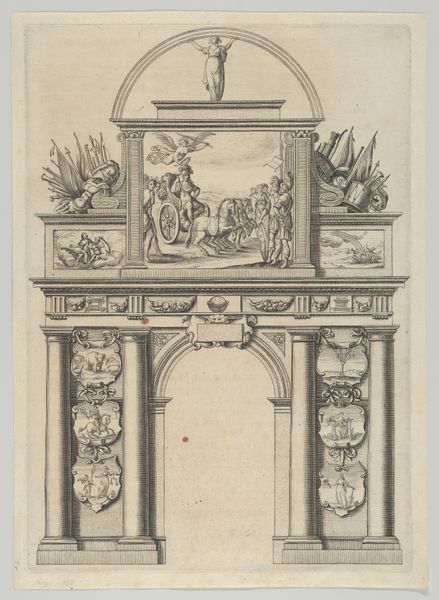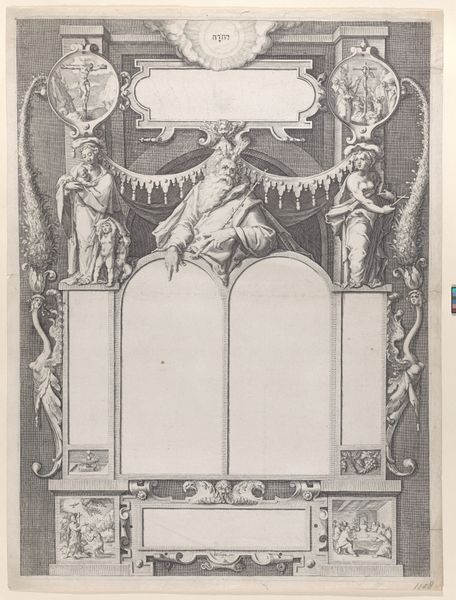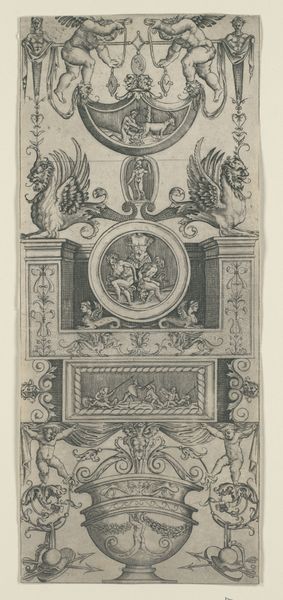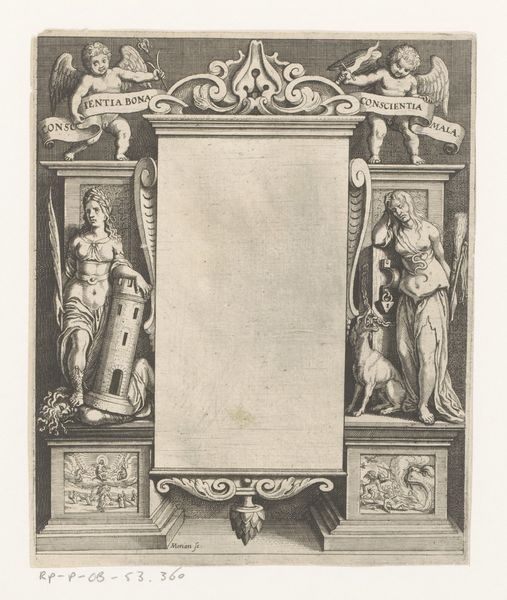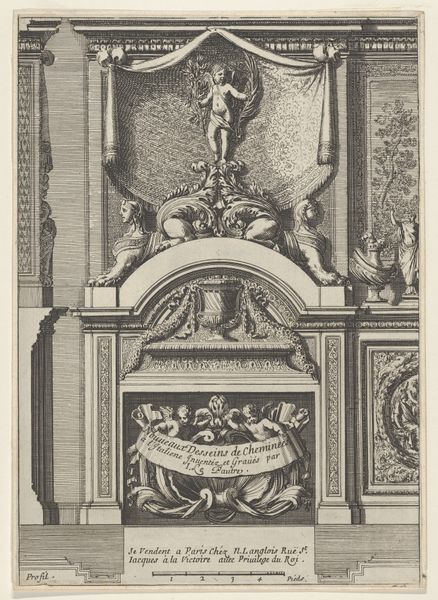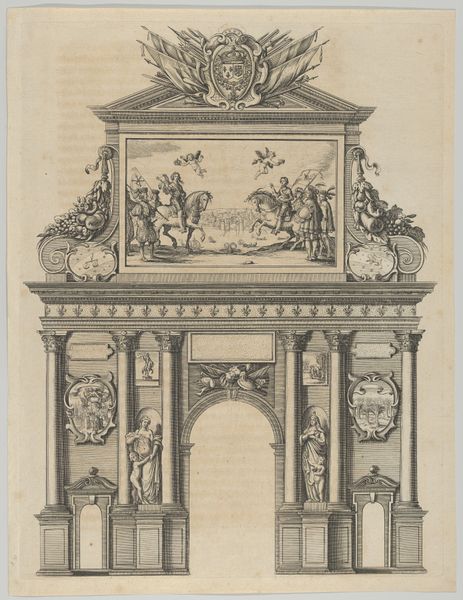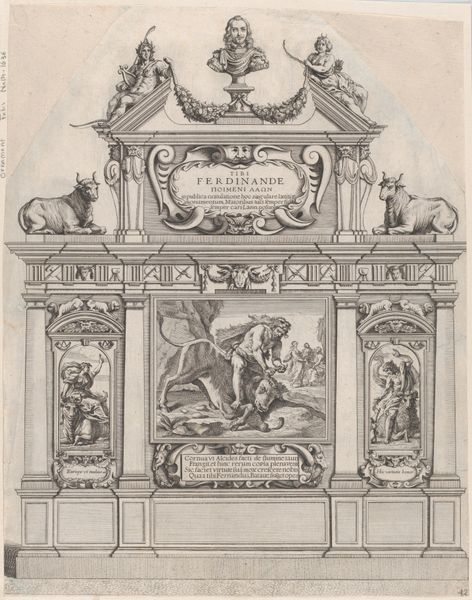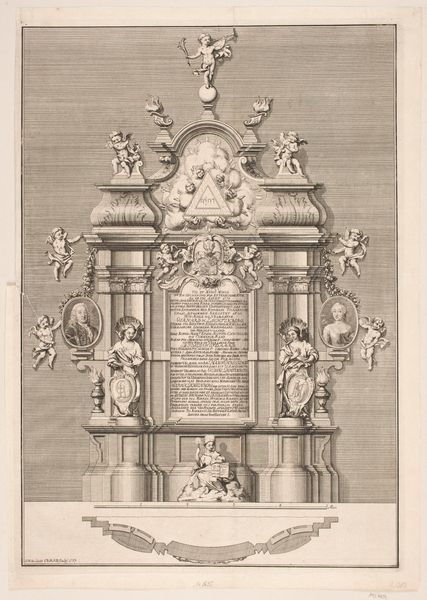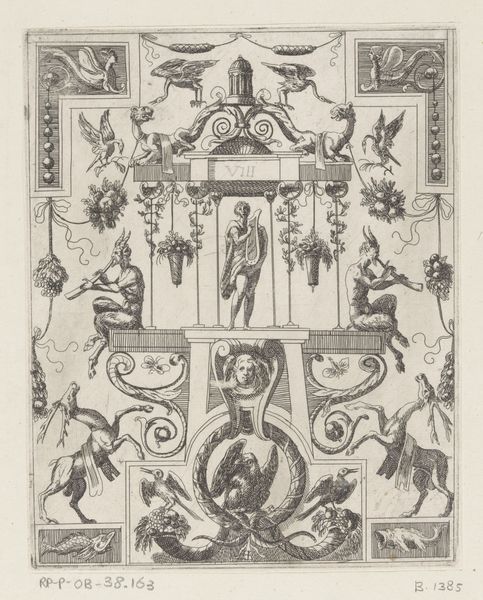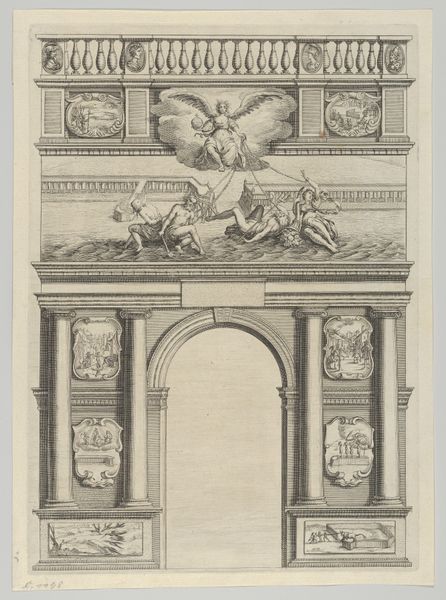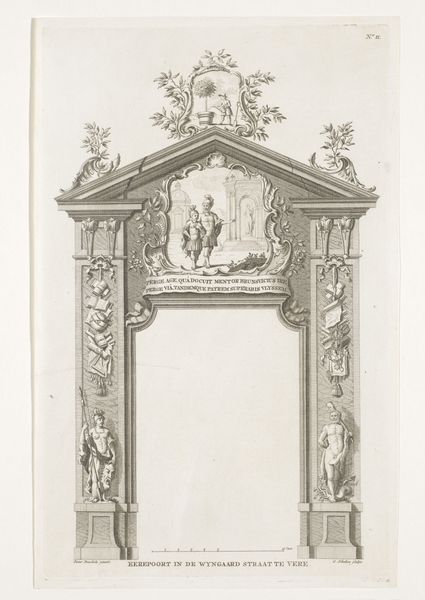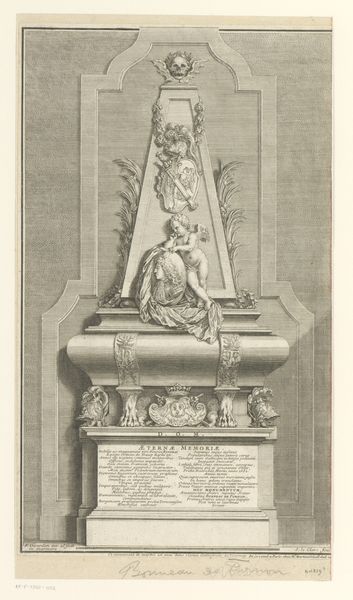
Triumphal arch, from 'Éloges et discours sur la triomphante réception du Roy en sa ville de Paris ...' by Jean-Baptiste de Machault 1629
0:00
0:00
drawing, print, engraving, architecture
#
drawing
#
allegory
#
baroque
# print
#
history-painting
#
engraving
#
architecture
Dimensions: Sheet: 11 7/8 × 8 5/8 in. (30.2 × 21.9 cm) Plate: 11 1/4 × 7 15/16 in. (28.5 × 20.2 cm)
Copyright: Public Domain
Curator: Here we have an engraving from 1629 by Melchior Tavernier, titled 'Triumphal Arch.' It's a plate taken from Jean-Baptiste de Machault’s book commemorating the royal reception in Paris. Editor: It feels...imposing, in a controlled, theatrical sort of way. The symmetry is almost aggressive. What’s your read on the structural elements at play? Curator: The arch is the main device, of course. Tavernier’s rendering uses strong vertical lines from the columns and supporting statuary, which provides stability, contrasting with the floating, almost ecstatic figures adorning the top register. The image as a whole uses an architectural form as a device for delivering propagandistic material. Editor: I see the figures of Neptune and perhaps some sort of regal personification, along with the angel at the center. The whole composition suggests power but how much of this is meant to whitewash some rather uncomfortable power dynamics? After all, royal entries into cities were always performative demonstrations of monarchical authority. Curator: Precisely! The engraving idealizes the monarchy through classical and allegorical symbols. Consider how the texture, achieved by varied line weights, articulates depth and grandeur while advancing the goals of royal affirmation. Editor: Absolutely. But isn't Tavernier also offering commentary on the way political events and power structures were consumed and digested by the populace through carefully calibrated images like this one? Did it succeed or reveal inherent tensions? Curator: That tension certainly gives the engraving complexity. As a piece within a book meant to disseminate positive messaging around the King, one assumes its intended purpose was fulfilled by reinforcing that monarchical ideal through widespread distribution and access. Editor: And those dynamics of royal affirmation, made visually apparent in this Mannerist engraving, remind us that propaganda—religious or royal—always serve a very particular ideological aim, creating realities as much as reflecting them. Thank you, the more I examine the engraving, the more I appreciate the layered conversation embedded within this ‘Triumphal Arch.' Curator: Indeed. It is in that intersection where formal art principles serve as both reflections and distortions of societal reality that these pieces acquire potency and invite extended consideration.
Comments
No comments
Be the first to comment and join the conversation on the ultimate creative platform.
